|
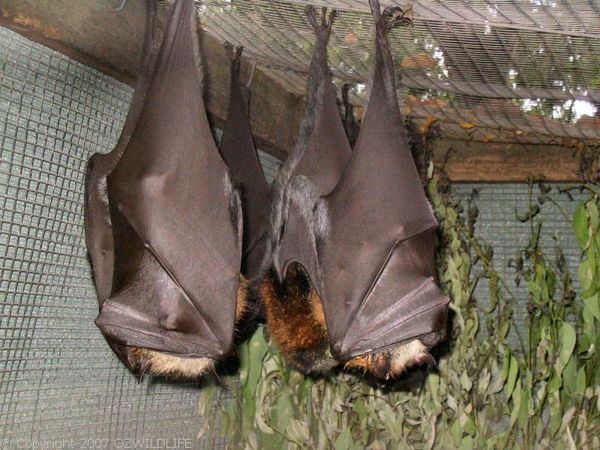
Grey-headed Flying-foxes resting at Lone Pine Koala Sanctuary, Brisbane, Queensland. See how they wrap their wings round their bodies.
Image by ozwildlife - Some rights reserved.
|
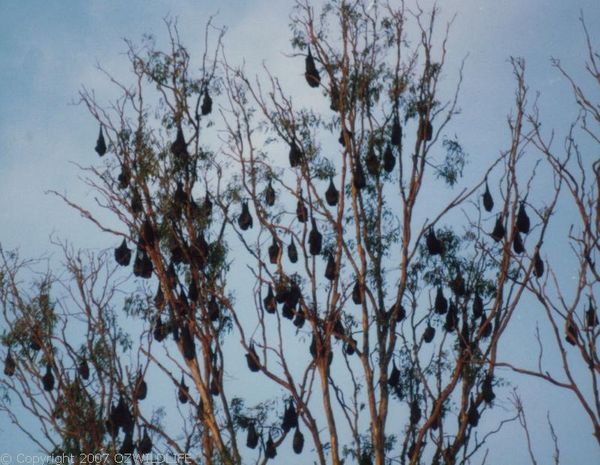
This is part of the huge flying fox colony on Indooroopilly Island, Brisbane. This photograph was taken from a boat on the Brisbane River just before sunset. (Flying foxes are also known as fruit bats). The Wildlife Preservation Society of Queensland run wildlife cruises to the bat colony (the "Batty Boat Cruise").
Image by ozwildlife - Some rights reserved.
|
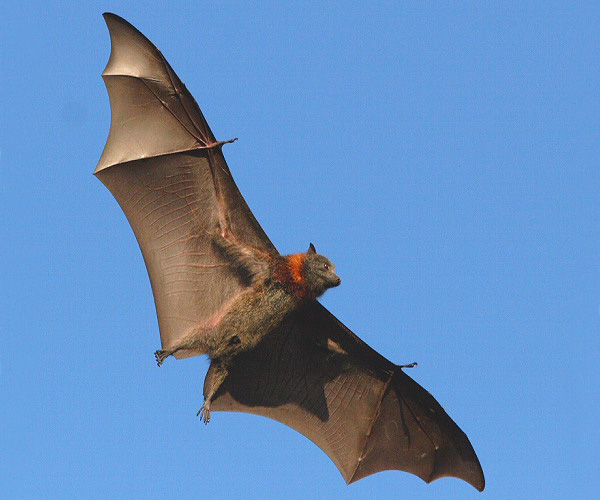
This shot of the Flying Fox in flight shows the wing structure. The wings are membranes of skin stretched over elongated fingers and forearms.
Photograph copyright: Chi Liu - all rights reserved. Used with permission.
|
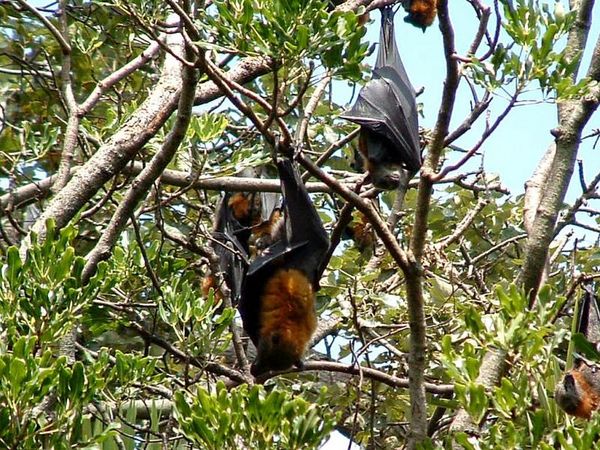
Grey-headed Flying-fox
Photograph copyright: Nickolay Tilcheff - all rights reserved. Used with permission.
|
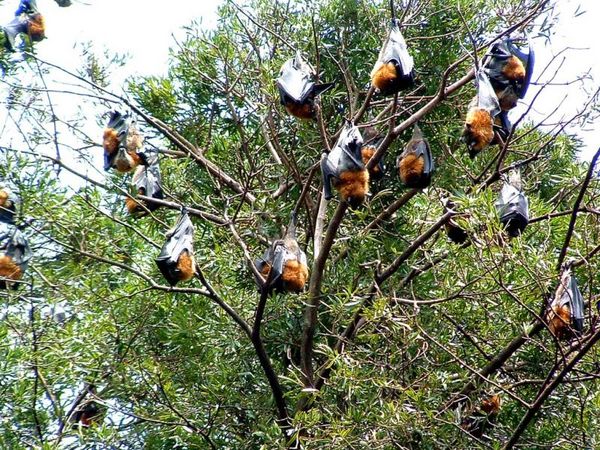
Grey-headed Flying-fox
Photograph copyright: Nickolay Tilcheff - all rights reserved. Used with permission.
|
|
|
MAMMAL FACTS |
Description
The Grey-headed Flying-fox has dark brown body and grey head, Reddish collar round the neck. Thick leg fur down to ankle. Roosts in large camps in branches of large trees.
Other Names
Grey-headed Fruit Bat
Size
Head and body length 25cm.
Habitat
Roosts in forest or mangroves. up to 150km inland. Forages in forests, woodlands, parks and gardens.
Food
Eats fruit and blossom from native trees, and nectar from Eucalypt trees. In cities will eat fruit from garden plants such as Pawpaws.
Breeding
Mating season is March or April, and single young is born in October. The baby is naked when born and is carried by mother for 4-5 weeks until fur grows. Young can fly at 8-10 weeks of age and forage independently at around 12 weeks.
Range
Eastern Australia from central Queensland coast to Victoria

Credits:
Map is from Atlas of Living Australia website at https://biocache.ala.org.au licensed under Creative Commons Attribution 3.0 License.
Notes
Never handle a flying fox. Although only a small percentage of bats carry a rabies-like disease (Australian Bat Lyssavirus) that can be passed to humans, only experienced and vaccinated bat handlers should touch Flying-foxes and Insectivorous Bats. (Wildlife Preservation Society Queensland).
Classification
| Class: | Mammalia | | Order: | Chiroptera | | Family: | Pteropodidae | | Genus: | Pteropus | | Species: | poliocephalus | | Common Name: | Grey-headed Flying-fox |
Relatives in same Genus
Black Flying-fox (P. alecto)
Spectacled Flying-fox (P. conspillatus)
|
|

